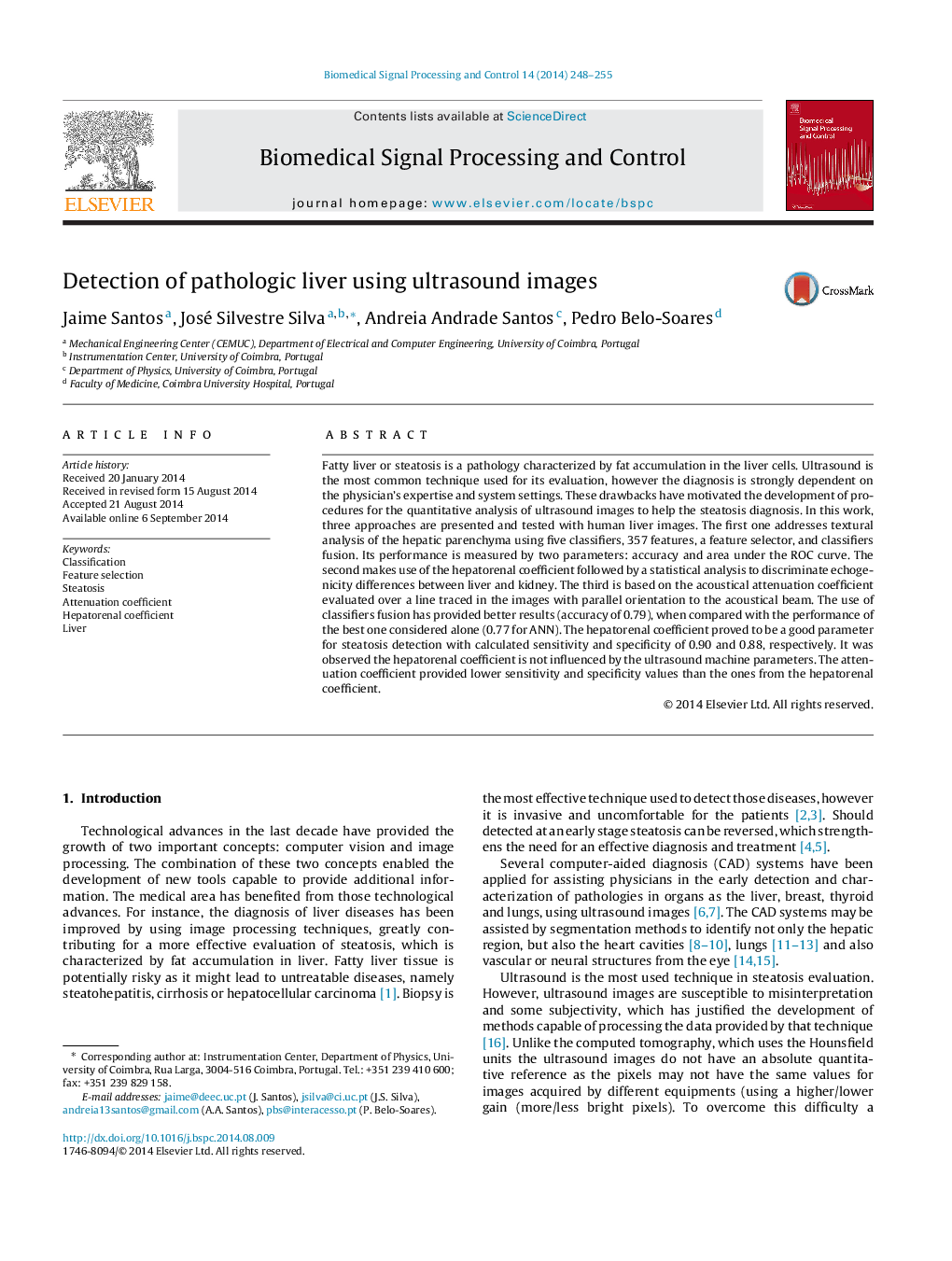| Article ID | Journal | Published Year | Pages | File Type |
|---|---|---|---|---|
| 558023 | Biomedical Signal Processing and Control | 2014 | 8 Pages |
•Identification of steatosis through three distinct approaches.•We show that it is possible to detect fatty liver using classifiers with a reduced number of features.•We prove that the hepatorenal coefficient and the attenuation coefficient are capable to successfully discriminate steatotic from normal livers.•Our methodologies could be also used to detect the degrees of steatosis useful for analyzing its evolution over time.
Fatty liver or steatosis is a pathology characterized by fat accumulation in the liver cells. Ultrasound is the most common technique used for its evaluation, however the diagnosis is strongly dependent on the physician's expertise and system settings. These drawbacks have motivated the development of procedures for the quantitative analysis of ultrasound images to help the steatosis diagnosis. In this work, three approaches are presented and tested with human liver images. The first one addresses textural analysis of the hepatic parenchyma using five classifiers, 357 features, a feature selector, and classifiers fusion. Its performance is measured by two parameters: accuracy and area under the ROC curve. The second makes use of the hepatorenal coefficient followed by a statistical analysis to discriminate echogenicity differences between liver and kidney. The third is based on the acoustical attenuation coefficient evaluated over a line traced in the images with parallel orientation to the acoustical beam. The use of classifiers fusion has provided better results (accuracy of 0.79), when compared with the performance of the best one considered alone (0.77 for ANN). The hepatorenal coefficient proved to be a good parameter for steatosis detection with calculated sensitivity and specificity of 0.90 and 0.88, respectively. It was observed the hepatorenal coefficient is not influenced by the ultrasound machine parameters. The attenuation coefficient provided lower sensitivity and specificity values than the ones from the hepatorenal coefficient.
